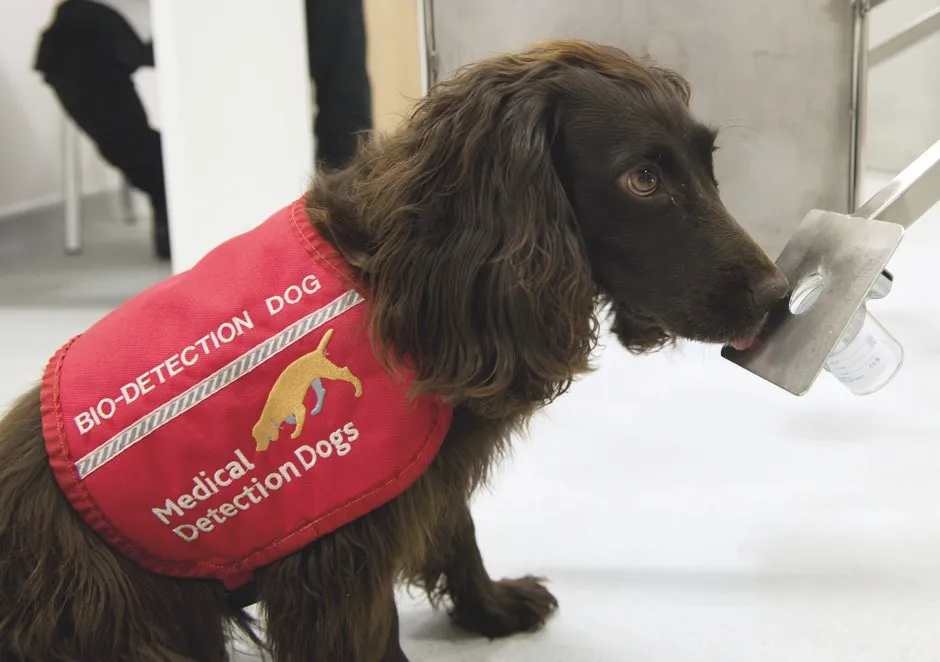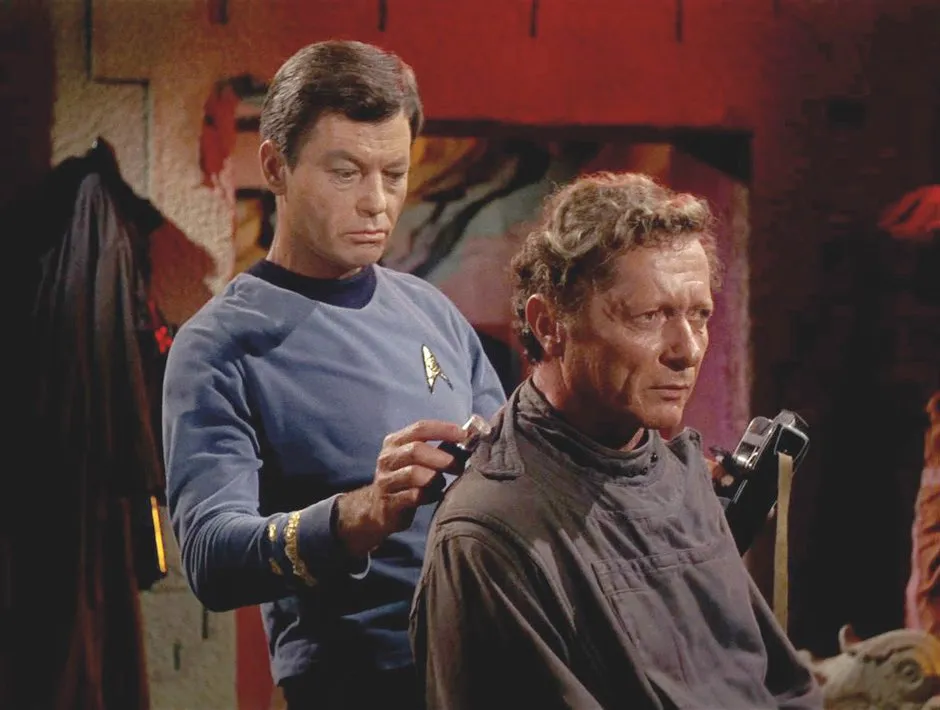Picture a world where you no longer have to run a gauntlet of tedious, invasive tests when you suspect that something is amiss with your health. Instead, your smartphone or wearable device tells you that there’s something wrong before you have any symptoms, and suggests that a trip to the GP might be in order, gaining you precious time to beat the illness. One day, perhaps you could be warned by a sensor that’s implanted inside your body to keep tabs on your health.
Such a world may not be that far into the future. Most of the technology already exists, and it has been right under our noses all along. It relies on a resource that has been with us since the dawn of humanity: the power of smell. Scientists believe that tapping in to this hidden world of odours could pave the way to a major shake-up in our approach to healthcare.
Making scents
We constantly emit an aura of hundreds of volatile chemicals from our skin, our breath, and potentially even our gut microbes. Every smell is made up of a complex cocktail of compounds – like a recipe with multiple ingredients. Generally, these scents are too faint for us to detect, but to animals we’re clouds of smells on legs, and they can detect when our odour is different from usual. This is vital, because scientists suspect that when we’re unwell, our unique aroma changes; each diseases could even have its own signature pong.
Read more about the future of medicine:
- Google AI better than doctors at detecting breast cancer
- Why personalised medicine is coming, and how it's going to help us beat disease
“If we can figure out these chemical signatures and mimic the animals’ smell-power, then we can use them to achieve earlier diagnosis and perhaps save lives,” says Prof James Logan, head of disease control at the London School of Hygiene and Tropical Medicine. And that’s exactly what he and his colleagues have been doing for one killer disease: malaria.
Getting bugged
The search begins with the mosquito. Although unpopular, it has one important asset: a highly sophisticated sense of smell, which it uses to hunt us down. It’s this efficiency that makes it a threat to human life in those parts of the world where it carries the malaria parasite, Plasmodium.
Progress in the fight against malaria has stalled, partly because some people don’t realise they have the infection, and can pass it on when they’re bitten again. But Logan and his team of researchers discovered that when someone is infected by a malaria-carrying mosquito, they produce chemicals that change their smell, making them even more attractive to other mosquitoes.
“So the malaria parasite is manipulating the human body to boost its chances of being transmitted,” says Logan. In a double-whammy, malaria also supercharges a mosquito’s sense of smell – all the better for sniffing out its human victims.
Read more about malaria:
- Could mosquitoes deliver malaria vaccines?
- Could sleeping with chickens ward off mosquito-borne malaria?
The researchers resolved to find out exactly what chemicals were attracting the mosquitoes. They collected odour samples from the feet of children with malaria, and separated these odours out into their component parts. Tiny electrodes were attached to mosquitoes’ antennae, which they use for detecting smells.
They then exposed the mosquitoes to the different components, and measured the electrical responses of the smell receptors in the antennae. The culprits that triggered the highest response turned out to be mainly chemicals called aldehydes. These could be synthesised in the laboratory and kept in a bottle. More on that later.
But how do we turn a mosquito into a diagnostic tool? “It would be lovely if we could put a leash on a mosquito and take it round a community to find people infected with malaria. Not possible. But there is an animal we can do that with,” says Logan. Enter the dog – arguably the world’s best and most enthusiastic sensor.
Find out how super-smeller Joy Milne describes five illnesses.
Lab report
A dog’s nose has 300 million receptors compared with our 5 million. In the same way as they point out illegal drugs in airports, dogs could be trained to sniff people’s ankles for malaria, says Prof Steve Lindsay of Durham University’s biosciences department.
The team worked with researchers in the Gambia to collect body odour samples from schoolchildren, asking them to wear nylon socks overnight. They also carried out blood tests to see which of the children had the malaria parasite: 30 of 175 children tested positive. None of the children had symptoms.
Read more about medical detection dogs:
- Medical detection dogs can sniff out diabetes
- Dogs can sniff out lung cancer with nearly 97 per cent accuracy
Then they presented the socks to two dogs trained to recognise malaria at the UK charity, Medical Detection Dogs (MDD). The dogs correctly detected the smell of malaria in 80 per cent of the samples from children who were positive for the infection. Among those who did not have the infection, the dogs got 91 per cent right.
“We think the malaria odour is so strong that the dogs can probably pick someone out from a crowd. So we’re looking at using the dogs at ports of entry to countries to detect people carrying the malaria parasite,” says Lindsay.

Once they’re spotted, they can be treated before they spread the infection. “If it works well, we have a fast, non-invasive and affordable test to help keep countries malaria-free,” he explains. “It might even be possible to eradicate malaria.”
Other than detecting malaria, dogs are already known for their skill in sniffing out cancers, and are being studied for several other conditions. But they aren’t the perfect answer for all our medical woes. They’re not likely to be installed in every GP surgery, for instance. And you can only work with a dog for a short time before it loses concentration. In contrast, a machine can keep going forever.
That’s where Logan’s bottled malaria smell comes in handy. The chemicals can be used to develop a device that mimics what the dogs do: an artificial nose. And malaria may just be the tip of the iceberg. “We know that other diseases have smells. If we can use the animals to help us pick out the right smells then we could develop diagnostics for any of these diseases,” says Logan.
On the nose
In the future, an artificial nose might be as simple as a patch that you wear on your skin like a plaster, or a wristband that changes colour when it detects the chemicals in your sweat, or it could be a smartwatch. It might even be a handheld electronic nose – an e-nose – tailored to sniff out the signature smell for the disease. Prof Krishna Persaud, a chemoreception expert at the University of Manchester, has developed an e-nose that’s about the size of an early mobile phone, and brings us a step closer to what has until now been science fiction.
According to Persaud, we haven’t quite managed to develop a tricorder like the one used by Star Trek’s Dr McCoy yet, “but we are looking at a set of tools right now being developed by researchers around the world, which will help to transform medicine for the future,” he says.

The e-nose works by producing a chemical fingerprint after processing signals from its ‘nose’ – the sensor. When an odour hits the sensor it changes the electrical signal. One type of sensor uses a small quartz crystal that oscillates at a frequency that depends on its mass. Incoming odour molecules change the mass of the crystal and the resulting change in frequency is measured.
Persaud and his team, however, are developing a new type of sensor – one that more closely mimics what an animal’s nose can smell. Using molecular biology, they’ve synthesised proteins that are naturally present in the mucus of animals’ noses, where they bind to odours and carry them to the smell receptors. The result is a super-sensitive bioelectronic nose that has to learn to detect changes in chemicals that happen when we get sick.
But another scientist wants to take it a step further, by putting a nose in your phone. Dr Andreas Mershin, director of the Label-Free Research Group at the Massachusetts Institute of Technology in the USA, says we live with our smartphones 24/7 so it makes sense to use them to keep tabs on our health.
Read more about smell:
- Is it true that NASA smells everything before it is sent into space?
- Can smells pass through liquids?
His vision is to create an artificially intelligent, dog-like nose. This ‘nano-nose’ would constantly monitor your smell from your phone. It could even save your life. “Eventually it might even be something you install inside your body so you never lose it,” he says.
Mershin has been learning how to perfect his nano-nose from the Medical Detection Dogs in the UK, and he and his colleagues have created a device even more sensitive than the dog’s nose. But the e-nose has a fundamental flaw: it doesn’t have a brain.
“We made a big mistake when we thought the dogs are so good just because their nose is so sensitive,” he says. “A dog can learn to detect a type of cancer in a sample. Then that dog, without additional training, can spontaneously recognise other types of cancer – even though they have no identical molecules. So the dog understands something more than just the volatiles that are flying around. No machine can achieve that.”
The key, he believes, is in how the handler trains the dog. “I want the phone to be your dog and you to be the handler – it learns your personalised scents so when they change, it can warn you,” says Mershin. It will alert you, for instance, if a mole becomes malignant. “Maybe your phone says, ‘you know what, you should probably see a dermatologist, something is smelling iffy’.”
The e-nose could become the most powerful diagnostic tool developed to date. It will allow us to flip the responsibility for healthcare on its head, Mershin predicts. “By understanding your own body smells, you will be in charge and the doctor will be the last person you turn to.”
- This feature was first published in theSummer2019issue ofBBC Science Focus–subscribe here.
Follow Science Focus onTwitter,Facebook, Instagramand Flipboard
